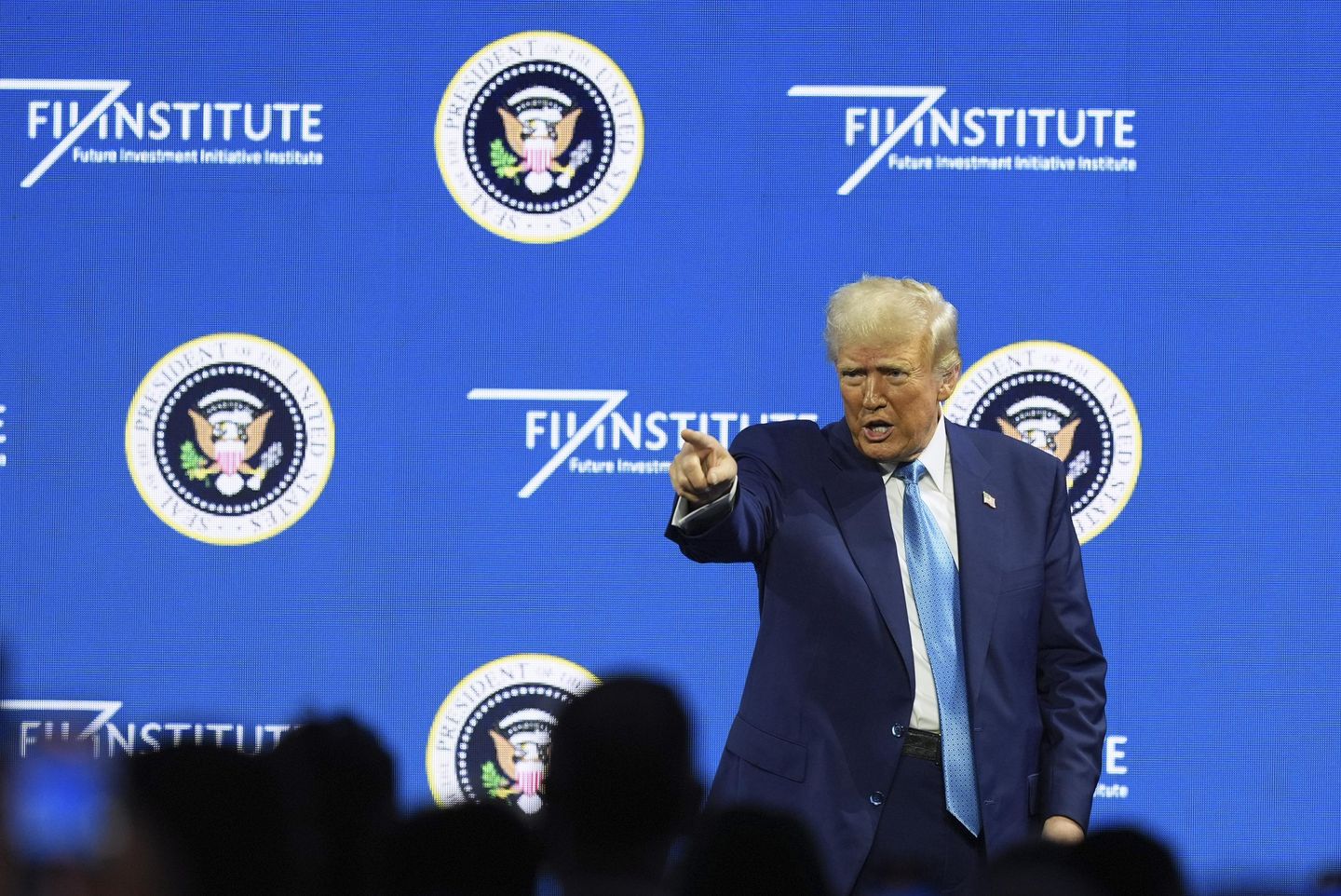
President Trump has quietly shifted more responsibility for driving economic growth and creating jobs to the private sector, a marked change from the Biden years, when significant job gains were tethered to government spending.
Since taking office in January, Mr. Trump has secured more than $8 trillion in investments from foreign and domestic companies looking to start or expand their U.S. operations, the White House said. Those investments, scattered across various industries, are expected to generate at least 451,000 new jobs in America.
Mr. Trump touted the investments at a White House event Wednesday. It included top executives from companies that have made major commitments to invest in the U.S., such as Johnson & Johnson, Eli Lilly, GE Aerospace and SoftBank.
Mr. Trump said the businesses are coming into the U.S. because of his administration’s “pro-jobs, pro-American economic policies.”
“They’re really coming in,” he said. “Some of them don’t even bother calling us. They just want to start their plants and start their factories.”
The total investment is more than eight times the $1 trillion under President Biden, who relied on government subsidies and expansion of the federal government to create jobs. Mr. Biden spurred private industry investment through three large spending bills totaling $854 billion.
The differing approaches underscore the contrasting philosophies of the two presidents.
Most economists warn that jobs created through government subsidies are unsustainable because they don’t reflect a business’ actual growth.
“Companies get hooked on corporate welfare and become dependent on it. In the long run, it damages the company because they focus on the next round of subsidies instead of making better products and reducing costs,” said Chris Edwards, an economist with the Cato Institute, a libertarian think tank.
“The government subsidies float jobs in the near term, but if the company is not competitive, the long-term jobs won’t be there,” he said.
Mr. Biden argued that government spending was necessary because for-profit businesses often overlook minority and other underserved communities. By pumping federal dollars into green initiatives, semiconductor companies and infrastructure projects, private industry would follow with investments, he said.
“When the government invests in the needs of the American people, invests in America and the American people, guess what: The private sector jumps in real quick,” Mr. Biden said in 2023. “Federal investments attract private-sector investments. A lot of it. It creates jobs and industries, like clean energy, and demonstrates we’re all in this together.”
His efforts went beyond funneling tax dollars into the private sector. He dramatically expanded the federal workforce, adding a record 200,000 employees in 2023. According to data from the Bureau of Labor Statistics, that accounted for 25% of the job creation that year. It was also a marked increase over the 45,000 added in 2022.
Since taking over the White House in January, Mr. Trump has sought to reduce the federal workforce and announced more than 275,000 firings or layoffs. However, the number of separated federal workers has fluctuated as federal judges ordered some to return to work.
Mr. Trump sought to attract investment in the U.S. through a combination of increased domestic energy production, tax cuts, deregulation and tariffs. Treasury Secretary Scott Bessent said the four tentpoles of the administration’s efforts to attract investment are not stand-alone policies but rather “interlocking parts of an engine.”
“Tax cuts and cost savings from deregulation raise real incomes for families and businesses; tariffs create an incentive for re-industrialization and fair trade; and deregulation complements tariffs by making it easier to invest in energy and manufacturing projects,” he said in a statement.
Alex Salter, an economics professor at Texas Tech University, described Mr. Trump’s approach as a carrot and stick strategy. He said lower taxes, deregulation and other incentives are the carrots, and tariffs serve as the stick.
“We are seeing a different approach to politically motivated investment because rather than doling out tax dollars, the Trump administration has fundamentally changed the rules on the ground, which has led to a change in the investment environment,” he said.
Mr. Salter said it’s too early to determine whether Mr. Trump’s approach will be successful in the long term. He noted that several of the investments are still just commitments and companies could back out.
At the White House event Wednesday, GE Aerospace CEO H. Lawrence Culp said his company was investing $16 billion this year across 16 states to expand its manufacturing footprint.
“Mr. President, thank you for what you’re doing not only to revitalize U.S. manufacturing, but helping ensure that the U.S. aerospace industry, one of our biggest net exporters, continues to lead the world in innovation,” Mr. Culp said.
Mr. Trump launched one of the most aggressive deregulatory pushes in U.S. history. He moved swiftly to slash environmental and banking rules, reverse restrictions on energy protection and roll back other red tape. In the energy sector alone, the Environmental Protection Agency cut 31 regulations in a single day, including rules for the oil-and-gas industry and power plants.
In March, Venture Global, a liquefied natural gas exporter, announced an $18 billion plan to expand production at its Louisiana plant. The move was announced after the Trump administration reversed Mr. Biden’s freeze on approving new LNG export plants.
Kraken, a cryptocurrency exchange, said it will spend $1.5 billion to build a U.S. retail futures trading platform after the Trump administration removed regulations on cryptocurrency.
Mr. Trump has sought to follow through on his “drill, baby, drill” campaign slogan by boosting support for the oil and natural gas industry. In addition to reversing the Biden restrictions on gas exports, Mr. Trump vowed to fast-track approvals for projects involving gas, coal, oil and minerals on public lands. Environmental reviews that typically take a year are now scheduled to be completed in 14 days. More complicated environmental impact studies that could take two years will now take 28 days.
Lowering taxes is one area that remains a work in progress. Administration officials are pushing Congress to expand business tax cuts in the budget bill, including allowing companies to expense 100% of their equipment and factory structures for tax purposes.
On Wednesday, Mr. Trump said that under his budget bill, 100% expensing would be retroactive to Jan. 20, essentially allowing companies to immediately build factories free of charge.
Mr. Bessent told senators this week that the administration wants to lower the corporate tax rate to 15% from its current rate of 21%, a pledge Mr. Trump made during his campaign. However, White House press secretary Karoline Leavitt said the president has not decided whether to lower the rate or raise it to pay for some of the other tax cuts he wants in his budget bill.
Then there is the stick.
Since taking office, Mr. Trump has imposed or threatened a flurry of tariffs aimed at reducing the trade deficit and bringing manufacturing jobs back to the country.
The tariffs have sent shock waves through the markets, largely because Mr. Trump has reversed himself on some of his tariff announcements, leading to uncertainty and volatility on Wall Street. Since November, most major indexes have been down. The S&P 500 is down about 3.3%, the Nasdaq is off about 4.5%, and the Dow Jones Industrial Average is down 5.3%.
The Trump administration argues that the tariffs are bringing manufacturing jobs back to America. Since Mr. Trump announced a 25% tariff on steel and aluminum products, Hyundai Steel, a South Korean company, announced it would spend $5.8 billion to build a steel mill in Louisiana. Nippon Steel, a Japanese company, said it would abandon its plans to outright acquire U.S. Steel and, instead, invest heavily in the American steel industry.
“President Trump has secured more investments in the United States of America in 100 days than Joe Biden did in four years. President Trump is America’s businessman in chief, and that’s why more than $5.3 trillion have flooded our country, bringing new jobs and investments to middle-class communities from coast to coast,” Ms. Leavitt said in a statement to The Washington Times.
Investments that the Trump administration has touted include:
• An IBM announcement this week that it would spend $150 billion in the U.S., with $30 billion dedicated to research.
• A $500 billion private-sector investment from a joint partnership formed by OpenAI, Oracle and Softbank.
• An Apple announcement that it would spend $500 billion and hire roughly 20,000 U.S. workers.
• A Taiwan Semiconductor announcement that it would invest $100 billion in the U.S. over the next four years.
• An Eli Lilly announcement that it would spend $27 billion to build manufacturing plants in the U.S.
Most of the $1 trillion invested during Mr. Biden’s four years came from taxpayer money flowing to various industries. For example, the Biden administration credits the Inflation Reduction Act with spurring $300 billion in clean energy investments and attributes $450 billion in new semiconductor investments to his Chips and Science Act, a 2022 initiative to bolster the industry.
All told, Mr. Biden’s three big legislative wins — the Chips and Science Act, the Inflation Reduction Act and his infrastructure law — sent $181 billion in taxpayer funds to billion-dollar companies, according to data compiled by the Cato Institute and the Committee for a Responsible Federal Budget.
“Biden was the biggest corporate welfare president ever,” said the Cato Institute’s Mr. Edwards. “When the government spreads subsidies so widely, almost every company is getting corporate welfare, and the government is not good at picking winners and losers. You can’t improve on the market.”

















